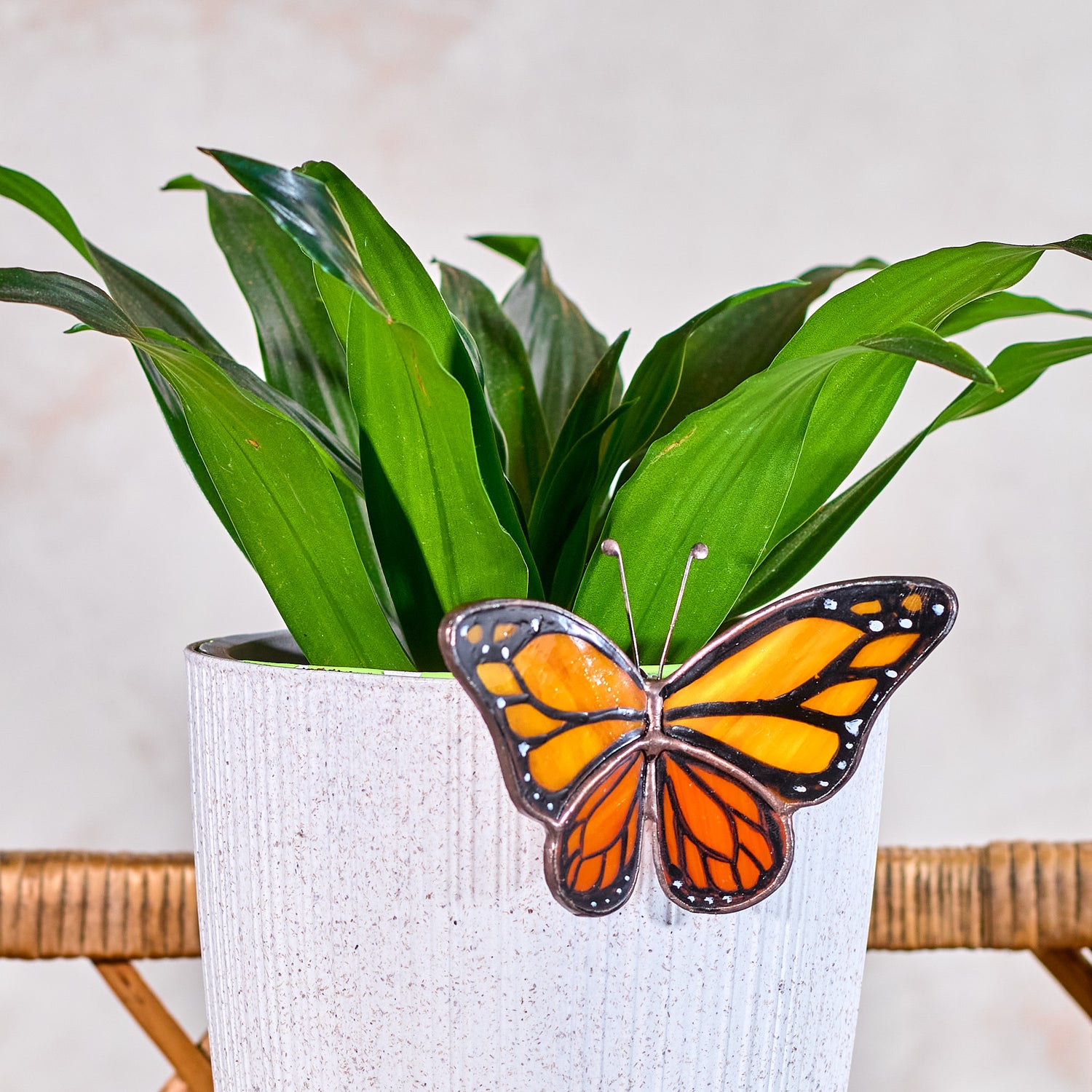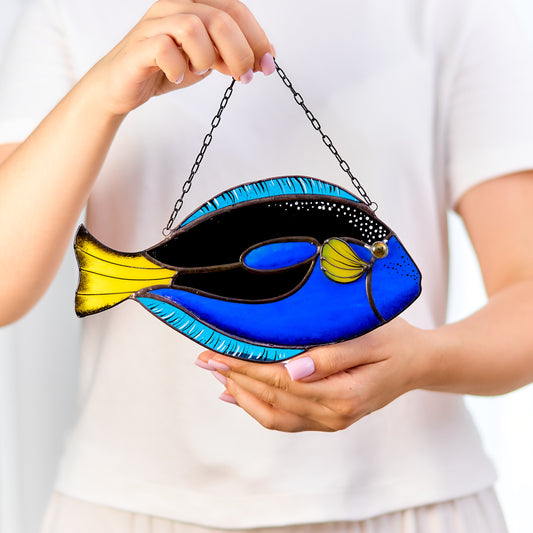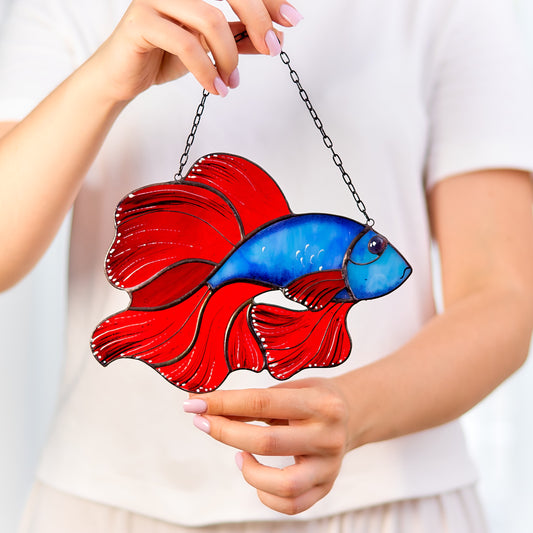Introduction
The phenomenon of combining light and glass has been capturing artists’ and scientists’ attention for centuries now! Many, who have seen stained glass windows in action, have questioned themselves: “How stained glass works?”, so let’s explore what stands behind the visual magic by diving into the science together.
The Magic of Color in Stained Glass
The magic of stained glass begins with its colors. Stained glass is created by adding metallic salts or oxides to molten glass, producing various hues. For instance, cobalt results in a deep blue, while gold gives a rich red. When you look at a stained glass sun catcher, you’re seeing light that has been filtered through these colored glasses.
This process works because different metals absorb different wavelengths of light. When light hits the glass, some wavelengths are absorbed, and others are transmitted or reflected, resulting in the vibrant colors you see. Picture a piece of red stained glass: it absorbs all colors except red, which passes through, giving it its striking color.
Light’s Journey Through Stained Glass
Light plays a crucial role in the beauty of stained glass. As light passes through a stained glass sun catcher, it bends and refracts, scattering the colors in various directions. This refraction causes the light to interact with the glass in unique ways, creating a radiant, glowing effect.
The quality and angle of light can significantly impact how stained glass looks. Natural sunlight enhances the colors, making them appear more vibrant and lively. Imagine how the sun catches the glass in your window, casting colorful reflections across the room. Artificial light, while useful, often doesn’t replicate this effect as vividly.
Texture and Thickness Influence
The texture and thickness of stained glass also affect how light and color interact. Thicker glass absorbs more light and appears darker, while thinner glass lets more light through, making it look brighter. Similarly, textured glass scatters light, adding a shimmering effect to your stained glass sun catcher.
Think about a piece of glass with a rippled surface. As light passes through, it bends and shifts, creating wavy patterns of light. This textured glass adds depth and complexity to stained glass art, making each piece unique. Even slight imperfections like air bubbles can catch and reflect light in fascinating ways.
Here’s a quick demonstration of different textures and thicknesses that we work with at Avalglass by Michael.
Color Mixing and Optical Effects
Artists often use multiple colors in stained glass to create intricate designs. When different colors of glass are placed next to each other, they blend in the viewer’s eye, producing new shades and enhancing the visual impact. This optical mixing is a key technique in stained glass art.
For example, placing a piece of red glass next to blue can create a stunning transition, where the colors seem to merge and interact. This blending effect enriches the overall appearance of the stained glass sun catcher, making it dynamic and captivating. You can see this in the detailed patterns and gradients often found in stained glass designs.
Appreciating the Imperfections
One of the charming aspects of handmade stained glass is its imperfections. Handcrafted pieces often contain small air bubbles, color variations, and slight irregularities. These imperfections catch the light in unique ways, adding character and depth to the glass.
When light hits an air bubble or a slight flaw, it creates tiny sparkles and shifts in color, making each stained glass piece one-of-a-kind. These imperfections highlight the craftsmanship involved and add to the beauty of stained glass sun catchers. They remind you that each piece is handmade, with a unique story and character.
We hope that our post helped you understand the science behind the stained glass a little bit more! Stained glass is trully a timeless addition to any home decor, bringing a touch of magic into your everyday life.









